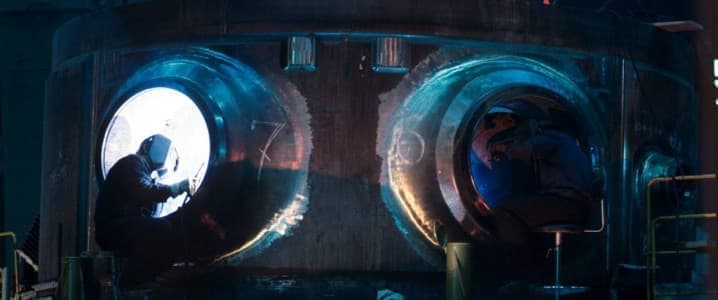The old cliched joke in newsrooms used to be: “Nuclear fusion is 30 years away...and always will be.” While that cheeky adage has continued to ring true even as scientists made small advancements and mini-breakthroughs in over the last 100 years, things are finally starting to catch traction in the highly experimental world of man-made nuclear fusion.
A recent record-breaking experiment at the United States National Ignition Facility (NIF), based at Lawrence Livermore National Laboratory in California got remarkably close to achieving net energy creation from their laser-based fusion experiment. The flash of light and energy which ensued lasted only a tiny fraction of a second, but which triggered a self-sustaining chain of nuclear fusion reactions -- the holy grail of nuclear fusion exploits. That reaction, which showed a 1,000% increase in energy release since 2011 experiments, came incredibly close to proving that net energy gain through fusion is possible in a lab setting.
“The pace of improvement in energy output has been rapid, suggesting we may soon reach more energy milestones, such as exceeding the energy input from the lasers used to kickstart the process,” Professor Jeremy Chittenden, co-director of the Centre for Inertial Fusion Studies at Imperial College London, was quoted last month by phys.org.
It’s nearly impossible to overstate the potential disruption that achieving net energy gain and, eventually, commercial nuclear fusion would have for the global energy landscape, the worldwide economy, and climate change. It would change everything. Unlike nuclear fission, which currently powers nuclear power plants around the world, nuclear fusion is a completely clean form of energy production, leaving no hazardous or radioactive waste behind. Its hydrogen-based fuel sources, deuterium and tritium, are plentiful and will be in abundance for thousands of years. And, unlike wind and solar, nuclear fusion requires relatively little land to operate.
While nuclear fission entails capturing the energy released by splitting unstable atoms, nuclear fusion is the process of combining two smaller atoms into one larger one, a process which releases several times more energy. This is the process that powers our own sun and stars and which created most of the atoms that you and I are made of. Nuclear fusion is the powerhouse of the universe.
But it’s long remained elusive for humans to recreate. While nuclear fusion experiments have a 100-year history, most of those have been thought experiments that were far outside of scientists’ reach. In recent decades, however, many governments have started to get serious about cracking the code for nuclear fusion in time to solve our myriad global energy crises and their devastating environmental externalities.
In the South of France, 35 nations have collaborated to make ITER, the world’s largest nuclear fusion reactor, called a tokamak, which involves the use of enormous magnets to heat and control plasma to make a kind of artificial star. ITER has projected that it will achieve first plasma in 2025. China, too, has an enormous state-sponsored tokamak.
And now, for the first time, private companies are also entering the race in earnest. A recent Guardian report identifies this emerging privatization of the nuclear fusion sector to be the single-biggest change in the pursuit of fusion, and perhaps it will be the development that finally tips the scales toward making this once-impossible dream a reality. The Fusion Industry Association, another recent addition to the world of fusion, estimates that private fusion startups have already collectively received more than $2 billion in investments. “Some of the investors in these firms have deep pockets: Jeff Bezos, Peter Thiel, Lockheed Martin, Goldman Sachs, Legal & General, and Chevron have all financed enterprises pursuing this new nuclear power source,” reports the Guardian. “For now, publicly funded labs are producing results a long way ahead of the private firms – but this could change.”
So far, the focus in fusion experiments is still just to show that net energy gain is possible. Until recently, successful fusion experiments required many times more energy than they released. Breakeven energy still hasn’t been achieved, and commercial nuclear fusion will require about 30 times more energy output than energy inputs in order to be viable. Breakeven could easily be 30 years away, but this time that 30-year projection just might stick. And if the global community puts its money and energy behind nuclear fusion to help it advance even more rapidly than its currently impressive pace, commercial fusion may even become a reality in time to play an essential role in avoiding climate change.
By Haley Zaremba for Oilprice.com
More Top Reads From Oilprice.com:
- 3 Bullish Catalysts For Oil This Fall
- The U.S. Power Grid Is At Risk Of Catastrophic Failure
- U.S. Oil Rigs See Sharpest One-Week Decline In Over A Year


















